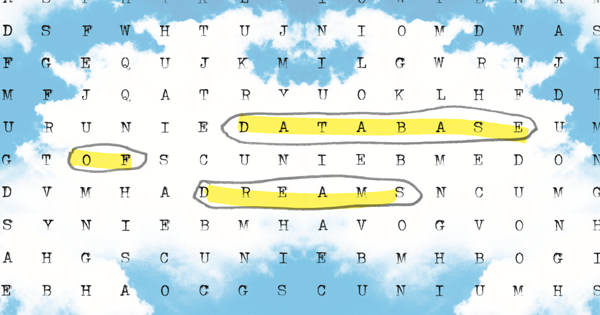Database of Dreams
Read an excerpt from Rebecca Lemov’s new book about the prehistory of Big Data

Long before the NSA set up its gray-faced data farms across the country, or the Library of Congress began archiving the Twittersphere, there was Bert Kaplan and his staggering collection of Microcards. A Harvard psychologist with big dreams of rescuing “the discards and leftovers, the neglected documents [comprising] the whole body of empirical observations upon which psychology is based,” Kaplan hoped to build the biggest database of anthropological information ever created.
To do it, he assembled the dreams of other people—the Rorschach tests, stories, memories, and errant thoughts of those anthropological standbys, the remote and nonliterate people of the world—into a catalog of humanity. But with the obsolescence of Microcards and the dawn of the computer age, Kaplan’s database was largely forgotten—until historian Rebecca Lemov unearthed it for The Database of Dreams, her new book about this grand experiment. “The world we live in,” she writes, “is one whose taproot is the unintended consequence of the benign dream of Kaplan.”
Kaplan’s database was a slumbering giant. Rare forms of data rested there. They did not exactly live, and they did not exactly die. Made up not only of dreams and test results, the database held people’s life stories, known by such terms as “life histories,” “personal documents,” “human documents,” and “expressive autobiographies.” In its recesses and through the mechanics of its collections, people’s lives became scientific data.
A Menominee Indian man who lived on the tribe’s reservation in the Wisconsin woods told his story in 1949 or 1950 to an anthropologist, George Spindler, who gave the data to Kaplan in 1957 to be held in the database’s second run. The central incident of this man’s tale was his memory of escaping as a boy from the Tama Indian Sanatorium in Iowa, a long way from home. … After arriving at the asylum, the boy, known only as Case 9 in the Microcard archive, lived his life as the institution defined it. He never got permission to go home, never saw his father, never heard his native language spoken, and never got really better but never any worse. …
Case 9’s story “slept” for thirty years, as he rarely told it. The man the boy grew into had always intended to send it to True Story magazine but had never gotten around to it (“I heard they give prizes. I think of that a lot”), so when an anthropologist appeared to take down his life when he was forty-four, he readily told the story as if it had already been written, and that is exactly how it reads. He concluded matters by telling the man collecting his life history, “Well, I guess that’s all, George. There wasn’t much to my life. The main incident was the time I run away from that sanatorium. That’s the only thing that seems interesting to me.” He had never told the story to an outsider before, and perhaps it would never have been told had Spindler not come along. Like this one, myriad life histories in the data bank remained in a curious unresolved state, preserved but not published, archived but not really available. They rested in limbo. That is where I found them half a century later.
Excerpted from Database of Dreams: the Lost Quest to Catalog Humanity by Rebecca Lemov, published by Yale University Press. Reprinted by permission. All rights reserved.

